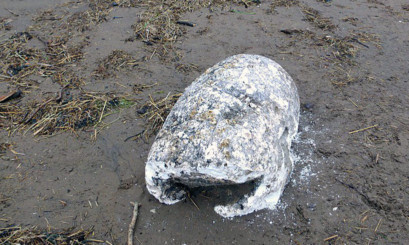Dog walkers have been warned of the potentially fatal dangers of washed-up Second World War relics.
It emerged at the weekend that four large pieces of lard from a wartime shipwreck were unearthed at St Cyrus beach in the wake of recent storms.
It is thought the depth of swell must have freed the lard from one of more than 50 sunken merchant ships.
The last large reported deposit of lard was in the 1980s at Stonehaven, and caused dogs to take ill. A decision was taken then to dispose of the lard after some of the dogs eventually died.
Former Stonehaven auxiliary coastguard in-charge Alex Wallace, a member of Johnshaven Community Council, said: “As soon as it was discovered that some dogs were becoming ill and I believe some eventually died following consuming some of the lard the decision was soon taken to dispose of the lard by setting fire to it.
“At the time the lard was already 40 years old. Now, with the latest sighting an extra 30 years on, for someone to even suggest it ‘smelt good enough to have a fry-up with’ is very irresponsible.
“This should not be approached by walkers and certainly should not be consumed by either members of the public or their dogs.”
Coastguard Montrose Sector urged walkers to avoid contact with anything unknown found on the coast. A spokesman said: “If unsure dial 999 and ask for the coastguard.”
Meanwhile at Kinshaldy Beach, Tentsmuir, erosion from the storms exposed a narrow-gauge railway line that was used during the Second World War.
Sections of corrugated iron used as moulds to create coastal sea defences and concrete tank traps were also discovered.
